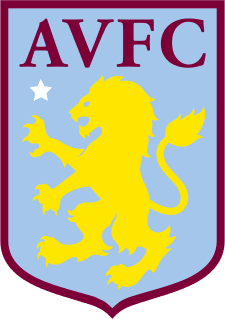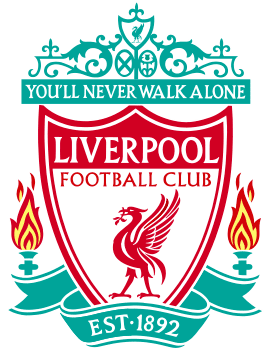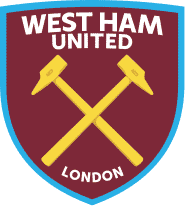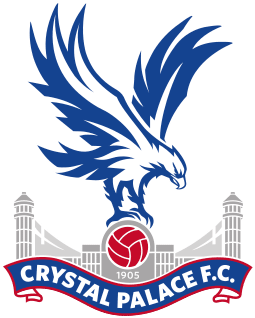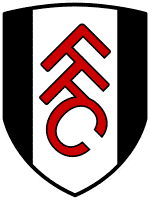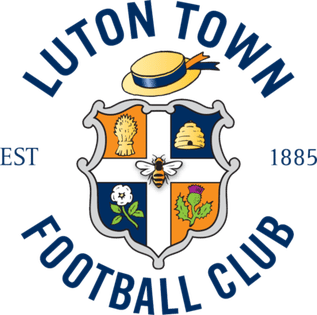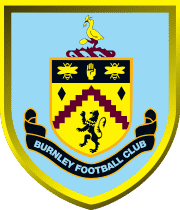Aston Villa FC Tryouts & Club Guide: History, Stadium, Players, and More!

Welcome!
Discover the world of soccer with fcscout.com, your go-to scout for club tryout information, club guides, player profiles, in-depth product reviews, and more. We’re dedicated to exploring and revealing the best in each domain, empowering you with knowledge to make informed choices.
Thank you for being here!
Hi, I’m Carlos! A coach, sports enthusiast, and the founder of FCScout.com.
I fell in love with the game at a very young age like many of you. I’ve been following and playing soccer for many years.
Throughout my career, I always enjoyed helping soccer players chase their dreams, which is why I started this website. I wanted to reach a larger audience outside of my local area and fcscout.com was born.
This website is a platform I will be using to update club pages on any tryouts, stadiums, players, tech, and more from clubs around the world. I also create free recruitment profiles for players looking to have that extra competitive edge when reaching out to clubs.
That’s it. That’s my pitch for you to stick around (or browse the site as you please).
This is already too much text for a “see more” drop-down button thing. If you want to reach out to me, head on over to my contact page 🙂

Aston Villa Football Club is an English professional football club based in Aston, Birmingham. The club competes in the Premier League, the top tier of the English football league system.
Aston Villa FC Youth Development System
The Aston Villa Under-23s, also known as Aston Villa Under-21 and Aston Villa Reserves, are the most senior youth development team of Aston Villa and compete in Premier League 2 (Division 2) of the Professional Development League and the EFL Trophy in the 2020–21 season. The team were originally part of the FA Premier Reserve League since its foundation in 1999 and were winners of the 2011-12 Premier Reserve League South title, the last in that format. The team plays its home games at Aston Villa’s training ground, Bodymoor Heath and occasionally Villa Park. Aston Villa also have an academy side that competes in the Under-18 division of the Professional Development League and the FA Youth Cup annually. From 2019, having been promoted back to the Premier League, Aston Villa also field an under-21 side in the EFL Trophy against League One and League Two opposition.

The side has been successful in recent years, as well as becoming national champions in the 2003–04 and 2009–10 seasons, the team also clinched four out of five Southern Championships between 2007 and 2012, before the format changed to the Professional Development League. The side also won the NextGen Series in 2013, a Europe-wide tournament for elite academies.
Current first-team players Keinan Davis, Indiana Vassilev, Jacob Ramsey, and Jack Grealish all came through the youth system at the club, as well as former players Brian Little, Gabriel Agbonlahor, Ciaran Clark, Gary Cahill, Gareth Barry, Thomas Hitzlsperger, Darius Vassell, Craig Gardner, Marc Albrighton, Andre Green, Andreas Weimann, and Steven Davis amongst many others. The Villa academy also developed former England striker Daniel Sturridge and Birmingham City midfielder Daniel Crowley. The U23 team is primarily made up of players under the age of 23, although three over-age outfield players and an over-age goalkeeper may be named in a match squad. These may include fringe first-team players and first-team players recovering from injury.
The Aston Villa Foundation works in partnership with three local further education providers to offer a high-quality Boys Football and Education programme.
The programmes are designed to give young people aged 16-19 the opportunity to gain A Level and BTEC qualifications while training and studying towards a career in sport.

Students can choose from our Central Football Academy, Halesowen Football Academy and Aston Manor Football Academy.
Central Football Academy
Entering its fourth year of delivery , the programme has gone from strength to strength since its inception.
All classes, training and matches take place out of the Aston area, in line with education partner Ormiston Shelfield Community Academy.
Boasting 100% pass rate in 2020
This Academy offers students the opportunity to pursue a career in sports coaching while competing in a national league and cup programme against other professional clubs representing the Aston Villa Foundation.
For more details, head here.
Halesowen Football Academy
Now in its second academic year, the Halesowen Football Academy is run in partnership with Halesowen College.
In this short time, the programme has doubled its student numbers.
The programme offers the opportunity to gain a BTEC Sport qualification while representing the Aston Villa Foundation in competitive matches.
For more details, head here.
Aston Manor Football Academy
Aston Manor Academy, rated ‘Outstanding’ by Ofsted, became another education partner in September 2019.
The success of the programme has meant a doubling of enrolled students this academic year.
Boasting a 100% pass rate at both A Level and BTEC, with 65% of students scoring A*- B and an above national average grade of B-, Aston Manor Academy is the perfect partner to deliver on the educational side of the course.
The programme offers the opportunity to study A Levels or a BTEC Sport qualification, while representing the Aston Villa Foundation in competitive matches.
For more details, head here.
Aston Villa FC Recruitment Trials
At the time of this writing, there is no official publishing’s on Aston Villa FC trials. Please come back at a later date while we monitor this club or click here to visit their official news section.
EXPLORE MORE CLUBS!
Explore more professional clubs by continent.
Stadium
Villa Park is currently used as the home field for Aston Villa, although in the past the team has also played at Aston Park (1874–1876) and Wellington Road (1876–1897) Football matches are played at Villa Park, which is the seventh largest stadium in England and the largest stadium in the English Midlands. Since the first England senior international in 1899, it has played host to a total of 16 England senior internationals, the most recent of which took place in 2005.
As a result, it was the first time in three separate centuries that an English ground hosted an international football match. With 55 FA Cup semi-finals played there, Villa Park holds the record as the most used stadium in the competition’s history. The club has received approval to enlarge the North Stand, which will include “filling in” the corners that are located on either side of the North Stand. If all goes according to plan, the capacity of Villa Park will be doubled to almost 51,000 people.

The current training ground can be found at Bodymoor Heath, which is close to Kingsbury in north Warwickshire. The land for the training ground was purchased from a nearby farmer in the early 1970s by Doug Ellis, who was the chairman of the club at the time. In spite of the fact that Bodymoor Heath’s amenities were cutting edge when the 1970s rolled around, by the late 1990s they had begun to show their age. Ellis and Aston Villa plc made the announcement in November 2005 that they would be investing a total of GB£13 million and redeveloping Bodymoor in two parts.
On May 6, 2007, the new Aston Villa training ground was formally introduced to the public by then-manager Martin O’Neill, then-team captain Gareth Barry, and 1982 European Cup winning team captain Dennis Mortimer. The Aston Villa squad moved into the new facility in preparation for the 2007–08 season. It was revealed on August 6, 2014 that Villa Park would be included in the FIFA video game beginning with the FIFA 15 release. Additionally, it was said that all of the other Premier League stadiums would also be completely licensed beginning with this game.
Crest and Colors
The colors of the club are a sky blue shirt with sky blue sleeves, white shorts with claret and blue trim, and sky blue socks with claret and white trim. The jersey is claret with sky blue sleeves. They were the first people to ever wear the claret and blue colors together. In the beginning, Villa’s colors consisted primarily of wearing basic shirts that were either white, gray, or a shade of blue, along with either white or black shorts. After that, between the years 1877–1979, the team competed while wearing a variety of different uniforms, ranging from all white to blue and black to red and blue to plain green. By the year 1880, William McGregor had devised a new uniform consisting of black jerseys with a red lion embroidered on the chest. For the next six years, this strip remained everyone’s top pick. An entry dated Monday, November 8th, 1886, may be found in the official minute book of the club and reads as follows:
(i) Proposed and seconded that the colors be chocolate and sky blue shirts and that we order two dozen. (ii) Proposed and seconded that Mr McGregor be requested to supply them at the lowest quotation.
Claret is the hue that evolved from chocolate over time. No one really knows how or why claret and blue got to be the club’s official colors, but they did. Claret and blue are the colors worn by several other English football teams, including West Ham United and Burnley, both of whom are members of the Premier League.

In May of 2007, a new badge was unveiled for use beginning with the 2007–08 season and moving forward. The new crest features a star to signify Aston Villa’s triumph in the European Cup in 1982, as well as a backdrop of light blue with the club’s “lion rampant” in the center. The ancient motto “Prepared” is still displayed on the emblem, but the name Aston Villa Football Club has been abbreviated to AVFC. The FC was left off of the previous badge, but it has been added to the new one.
As opposed to the shattered lions of the past, the current iteration of the lion is unified. Randy Lerner put out a call to the community for assistance in the creation of the new badge. After soliciting feedback from various supporter groups, the organization announced on April 6, 2016, that it would be switching to a new crest beginning with the 2016–17 season. The lion in the new badge now has claws on its paws, and the term “Prepared” has been deleted from the badge in order to make room for larger versions of the lion and the club’s initials.
Ownership
As a result of legislation that was meant to formalize the expanding number of professional teams and players in the Association Football competitions, the first shares in the club were given towards the end of the 19th century. This was done in response to the growing popularity of professional football. FA teams were compelled to distribute shares to investors as a means of promoting trading among FA teams without compromising the FA itself.
This was done in order to avoid any potential conflicts of interest. This trade went on for a significant portion of the 20th century, up until Ellis began purchasing a significant number of the shares in the 1960s. Between the years 1968 and 1975, he served as chairman and was a big shareholder in “Aston Villa F.C.,” and between the years 1982 and 2006, he was the club’s majority shareholder. After being listed on the London Stock Exchange (LSE) in 1996, the price of the club’s shares saw significant volatility in the ten years that followed the listing. In 2006, it was reported that a number of groups and individuals were mulling over the possibility of making offers for Aston Villa. It was confirmed on the 14th of August in 2006 that Randy Lerner, who at the time was the owner of the Cleveland Browns of the National Football League, had reached an agreement with Aston Villa for the takeover of the club for the sum of 62.6 million pounds. Lerner assumed complete control of the company on September 18, 2006, and on September 19, 2006, Ellis and his board were replaced by a new board that Lerner had appointed. Lerner elevated himself to the role of Chairman of the club, naming Charles Krulak to the position of non-executive director, and bestowing the honorary position of Chairman Emeritus onto Ellis.
In May of 2014, Lerner put the club up for sale, estimating that it was worth approximately £200 million at the time. Aston Villa was sold to Recon Group, which is owned by Xia Jiantong, a Chinese businessman, on May 18, 2016, after Randy Lerner reached an agreement to sell the club. Following the approval of the transaction by the Football League, the sale was finalized on June 14, 2016, at a reported price of £76 million, and the club was then included under the Sport, Leisure and Tourism branch of Recon Group. After going through a series of competitions to compete for the ownership of Aston Villa, Recon Group emerged victorious. During the 2017–18 season, the team was unable to secure promotion to the Premier League. As a result, rumors began to circulate that the club was experiencing financial difficulties.
Because of this, the proprietor, Tony Xia, decided to look for further funding. It was revealed on the 20th of July, 2018, that the Egyptian company NSWE group, which is owned by the Egyptian billionaire Nassef Sawiris and the American billionaire Wes Edens, will be investing in the football club. They made the purchase of a controlling 55% stake in the club, and Sawiris assumed the job of club chairman when the transaction was completed. Documents from Companies House were made public on the 9th of August 2019, the day before Aston Villa was scheduled to return to the Premier League. These documents confirmed that Recon Group’s minority share ownership had been bought out, and that Dr. Tony Xia no longer had any involvement in the club.
